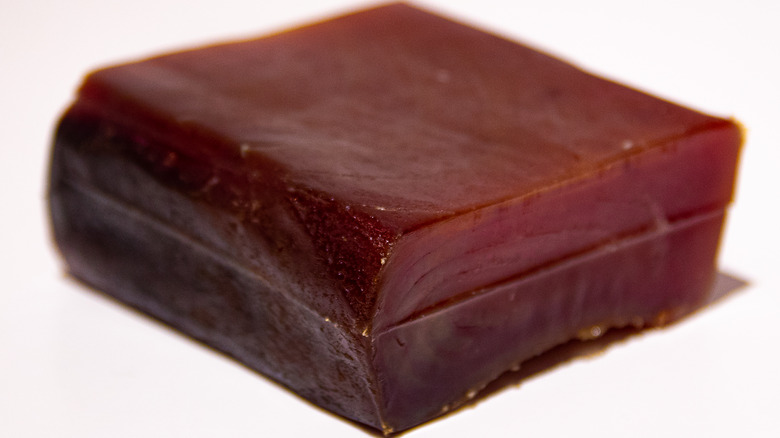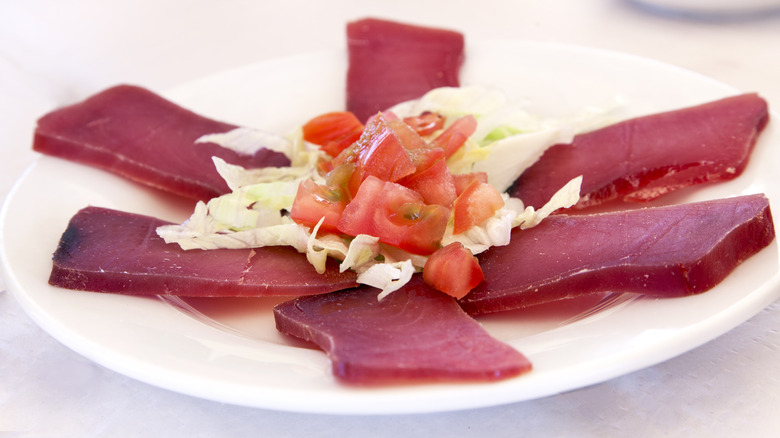The Intricate Process Behind Salt-Cured Tuna
If you ever find yourself lucky enough to travel to Southern Spain, you have to try the 'ham of the sea.' Of course, there aren't just whole hams floating in the water, just waiting for a hungry swimmer (although how great would that be?), it is merely a nickname for "mojama," a kind of cured tuna that is unique to the region (via Atlas Obscura). The ham comparison is due to the fact that mojama goes through a very similar curing process to jamón ibérico, a Spanish specialty similar to prosciutto.
Mojama will keep in the refrigerator for up to six months, per Epicurious. If you were to try the same with fresh tuna, it wouldn't be long before you encountered the foul smell and slimy texture of spoiled meat. Food spoilage results from bacteria getting into the meat and multiplying at a rapid rate, releasing toxins as they spread (via the United States Department of Agriculture). We can eliminate these microorganisms by subjecting them to extremely low or high temperatures, but we can also do so with salt.
Salt keeps bacteria out of the tuna
There is always a risk of bacteria getting into your meat since, as the USDA points out, these microorganisms are everywhere around us. The makers of mojama and other cured goods prevent this by completely coating the meat in salt, which draws water out of the meat (via BBC). Doing so makes the meat inhospitable to bacteria. In the case of mojama, the fish is typically packed in salt for two days, according to Atlas Obscura. After the tuna is removed from the salt, it spends a further 20 days dry-curing in the sun, at which point it is ready to enjoy.
Mojama has a firm texture, making it exceptionally easy to slice for tapas, often accompanied by tomatoes or almonds. It should retain its fishy flavor, according to Atlas Obscura, but will also pick up hints of salt and umami. Recently, some have been experimenting with new curing methods to preserve even more of the tuna's original flavor. The boldest approach comes from chef Quique Dacosta, and his restaurant in Dénia, Spain. According to Fine Dining Lovers, he cures his tuna in a tunnel with salt walls, but no salt actually makes contact with the meat. Reviews praised Dacosta's tuna, noting its fresher flavor, but his technique is likely a long way from becoming a common practice.

